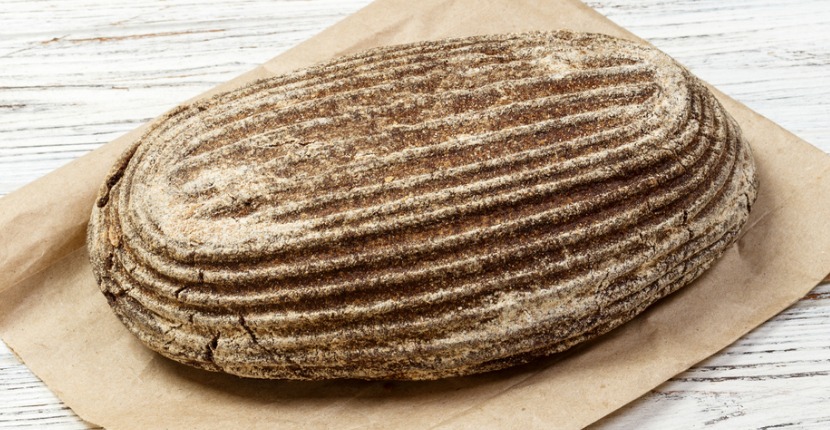“Would you eat bread made out of ancient yeast from the Bronze Age? One scientist would. There is virtually no style of eating, no diet fad or culinary trend that goes unnoticed and unwatched by rabid consumers of diet-related content these days. Sometimes these blogs and videos even go viral. But baking bread? That sounds dull by comparison. It’s hardly the kind of food content meant to go viral, right? What could possibly be more boring, you ask?
It turns out, quite a lot. Particularly when the man baking the bread is actually a scientist bent more on experimenting with antiquities than turning out one of life’s staples. Seamus Blackley, a video designer and scientist, recently got hold of some ancient yeast and decided to try baking a loaf, and chronicled the whole experience in a very 21st century fashion – he used his Twitter account. Blackley got samples of 4,500 year old yeast, with the help of two experts, and figured out how to help it mutate and become “bake-able” in a very modern loaf of sourdough in his own kitchen.
Two weeks ago, with the help of Egyptologist @drserenalove and Microbiologist @rbowman1234, I went to Boston’s MFA and @Harvard’s @peabodymuseum to attempt collecting 4,500 year old yeast from Ancient Egyptian pottery. Today, I baked with some of it… pic.twitter.com/143aKe6M3b
— Seamus Blackley (@SeamusBlackley) August 5, 2019
He was aided in his quixotic mission by Dr. Serena Love, an Egyptologist, and Richard Boman, a microbiologist. With their help, Blackley obtained pores from ancient pottery at the Peabody Museum of Archaeology and Ethnology at Harvard University in Cambridge, Massachusetts. Blackley said recent on his Twitter account, “With the help of (Love and Boman) I went to…the Harvard Peabody Museum to attempt collecting 4,500 year old yeast from ancient Egyptian pottery. Today, I baked some of it. This crazy dough fermented and rose beautifully.”
And here is the result. The scoring is the Hieroglyph representing the “T” sound (Gardiner X1) which is a loaf of bread. The aroma is AMAZING and NEW. It’s much sweeter and more rich than the sourdough we are used to. It’s a big difference. After this cools we will taste! pic.twitter.com/sYCJ8uP1oj
— Seamus Blackley (@SeamusBlackley) August 5, 2019
Yeast is used in baking all leavened bread, of course; it is essentially an organism found in nature, and even in the human body. Many people keep stashes of yeast to use repeatedly, over time. But 4,500 years? That’s a new one, on bakers and food bloggers alike.
The crumb is light and airy, especially for a 100% ancient grain loaf. The aroma and flavor are incredible. I’m emotional. It’s really different, and you can easily tell even if you’re not a bread nerd. This is incredibly exciting, and I’m so amazed that it worked. pic.twitter.com/qGRmi2Yg8Y
— Seamus Blackley (@SeamusBlackley) August 5, 2019
Blackley couldn’t just use the pores as he found them, naturally; first he had to sterilize them – who know the germs that lurked on organism that old? Then he added some “regular” yeast, and some grains, water and unfiltered olive oil. Soon he had what one could call ancient bread for a modern meal. For good measure, Blackley carved a hieroglyphic symbol – the one for bread – on top of the loaf before popping it into the oven.
Related Video:
https://youtu.be/qTOGRk9sGs0
The denouement of his experiment, he said, was fantastic. “The aroma of this yeast is unlike anything I’ve experienced,” he raved on Twitter. “The aroma is amazing and new. It’s much sweeter and more rich than the sourdough we are used to. It’s a big difference.”
Today I kept practicing with the grain and microbe combination. This will be the last test we show before we head back to the bio lab, and before we start using proper Ancient Egyptian baking techniques. The Hieroglyphs are “Di” and “Ankh” meaning “Given Life.” pic.twitter.com/QM0Om6464T
— Seamus Blackley (@SeamusBlackley) August 11, 2019
The big question is, of course, how did the bread taste? On Twitter, Blackley teased, “Samples go to Boman for rigorous analysis, but I was naughty and kept one!” (Perhaps only a scientist could perceive keeping a slice for himself as naughty.) He tried it, then enthused, “The crumb is light and airy, especially for a 100 percent ancient grain loaf. The aroma and flavour are incredible. I”m emotional,” he confessed on Twitter.
Related Article: Archaeologists Discover 14,400 Year-Old Bread in Jordan
To those outside the sciences, the obvious question to Blackley is perhaps, “why bother?” But in his world, and in the world of historians, the differences between past and present, and the ability to bridge those differences and bring the past to the present, is cause for unalloyed joy. Who are we to deny a self-described “bread nerd” like Blackley his fun? And more importantly, his science.
Anyone interested in Blackley’s baking project can check out his Twitter feed @Seamus Blackley.
